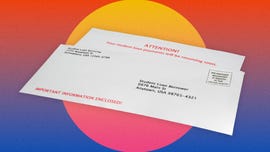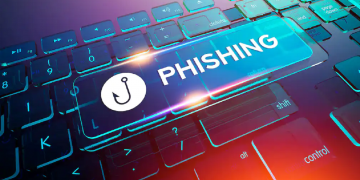While federal student loan payments were paused, I continued paying monthly to chip away at my graduate school debt. Now, with student loan forgiveness on the table, I decided to request a refund from my student loan servicer to maximize my debt relief. But it’s also complicating my forgiveness situation.
I thought taking advantage of the temporary 0% interest rates was a smart move while payments were on hold. I didn’t anticipate President Joe Biden’s forgiveness plan would include relief for graduate school debt.
Since graduate debt is included, and because I received a Pell Grant, I should now receive up to $20,000 in relief. But in order to maximize forgiveness, I have to take a few more steps to request a refund and raise my student loan balance. The biggest issue for borrowers in my position is making sure to receive a refund before applying for forgiveness; otherwise, you might have to request forgiveness twice.
I’ve spent hours on hold with my loan servicer and talking to a financial aid expert. Here’s what you can learn from my experience.
Don’t wait to request a refund
In order to receive maximum forgiveness, I first needed to request a refund for part of the money I paid during the pandemic — and experts say it pays to do this soon. That would bring my balance back up to my full forgiveness amount of $20,000.
Here’s a quick look at my situation. I rounded up to make the math a little easier:
My student loan scenario
Expected forgiveness amount
$20,000
Current student loan balance owed
$14,000
Amount paid during the pandemic
$7,500
Refund requested
$6,000 (to bring my balance back to $20,000)
While the steps are simple — request a refund, wait for your refund to raise your student loan balance, then request forgiveness — they can easily happen out of order. And that could cause your current loan balance to be forgiven before you receive your refund.
For example, what if the government were to cancel my current student loan balance of $14,000 before my $6,000 refund hit my account? I would be left with a loan balance of $6,000, which could have been forgiven had my refund processed sooner.
Avoiding this scenario is best, but if this does happen to you, there are actions you can take to receive your full forgiveness. The bad news is, how you’ll go about requesting additional forgiveness is not yet clear.
To reduce your chances of this kind of mishap, you’ll need to understand the refund and forgiveness timelines. Refunds are likely to be processed in four to six weeks, financial aid expert Mark Kantrowitz said. My loan servicer confirmed it would take me up to six weeks to receive mine, as well as for the balance to be adjusted to my loan account. (At the time of this writing, I’ve yet to receive mine).
With this timing in mind, it’s best to request a refund early in October, though sooner is better. That way, if it takes six weeks to process, you should have your refund and adjusted student loan balance before the end of November. You should then apply for forgiveness right away, since it could take up to another six weeks to process, allowing your debt balance to reset before payments restart in January.
But, if the timing doesn’t line up and you do end up with partial forgiveness before receiving your refund, we expect new guidelines to become available in coming weeks. And, if the Department of Education doesn’t automatically adjust your forgiveness amount, you can always apply for debt relief again, according to Kantrowitz.
…and don’t wait for an automatic refund
Brandon Douglas/CNET
According to the Federal Student Aid website, you might receive a refund automatically if you made payments during the federal moratorium and these payments lowered your loan balance to less than your forgiveness amount.
This means if you made payments during the pandemic that caused your student loan balance to drop below what you’re eligible for in forgiveness (for example, $10,000), the federal government should take this into consideration when you apply for loan forgiveness.
In other words, you don’t have to request a refund to maximize your forgiveness — but you probably should, “just in case there are glitches in the process,” Kantrowitz said.
And, if you paid off your student loan balance entirely during the pandemic, you won’t receive an automatic refund. You’ll need to request one on your own.
Requesting a refund is easy, but expect long hold times
To request a refund, you’ll need to call your loan servicer on the phone, which can be frustrating if you’re a millennial (guilty) or a member of Gen Z who’s used to requesting things quickly online. Hold times can be long and not everyone has the luxury of waiting for hours.
When I called my loan servicer to request a refund, I was unable to get through for about five days, spending several hours waiting to speak to a real person with irritating hold music taunting me in the background. One Friday morning I was finally connected to a representative within seven minutes. Once I got through, the rest was quick and painless.
The loan servicer representative confirmed how much I had paid during the pandemic, and asked how much of my payments I’d like to have refunded.
I opted for a partial refund. Though I made $7,500 in payments during the pandemic, I only requested $6,000 to set my loan balance to exactly $20,000. If I had requested a full refund of $7,500, I would end up with a remaining balance of $1,500 to pay off, yet again, after my forgiveness went through.
The agent confirmed that the $6,000 would go back onto my account, bringing my remaining student loan balance up to $20,000. She also told me that my refund would process in four to six weeks and the money would be deposited directly to my bank account. But what she couldn’t confirm was how the timing of my $20,000 student loan forgiveness might be affected by my refund.
In short, the earlier you request a refund, the better.
Hold on to your refund until your forgiveness goes through
If you receive your refund before your student loan forgiveness goes through, Kantrowitz recommends holding on to it in case the administration’s debt relief plan faces legal hiccups. While we all might be tempted to invest this money
, spend it on travel
or pay down credit card debt, it’s wiser to keep it easily accessible.
Kantrowitz recommends placing your refund money in a high-yield savings account or short-term CD. It won’t earn a huge amount of interest over a few months, but the money will be available in case there are any delays in receiving your forgiveness.
Once your student loan relief goes through, you’re free to use your refund as you see fit. Just make sure you find out if you’ll owe state taxes on your forgiven debt, so you can set aside money from your refund come tax season.
Source by www.cnet.com






























